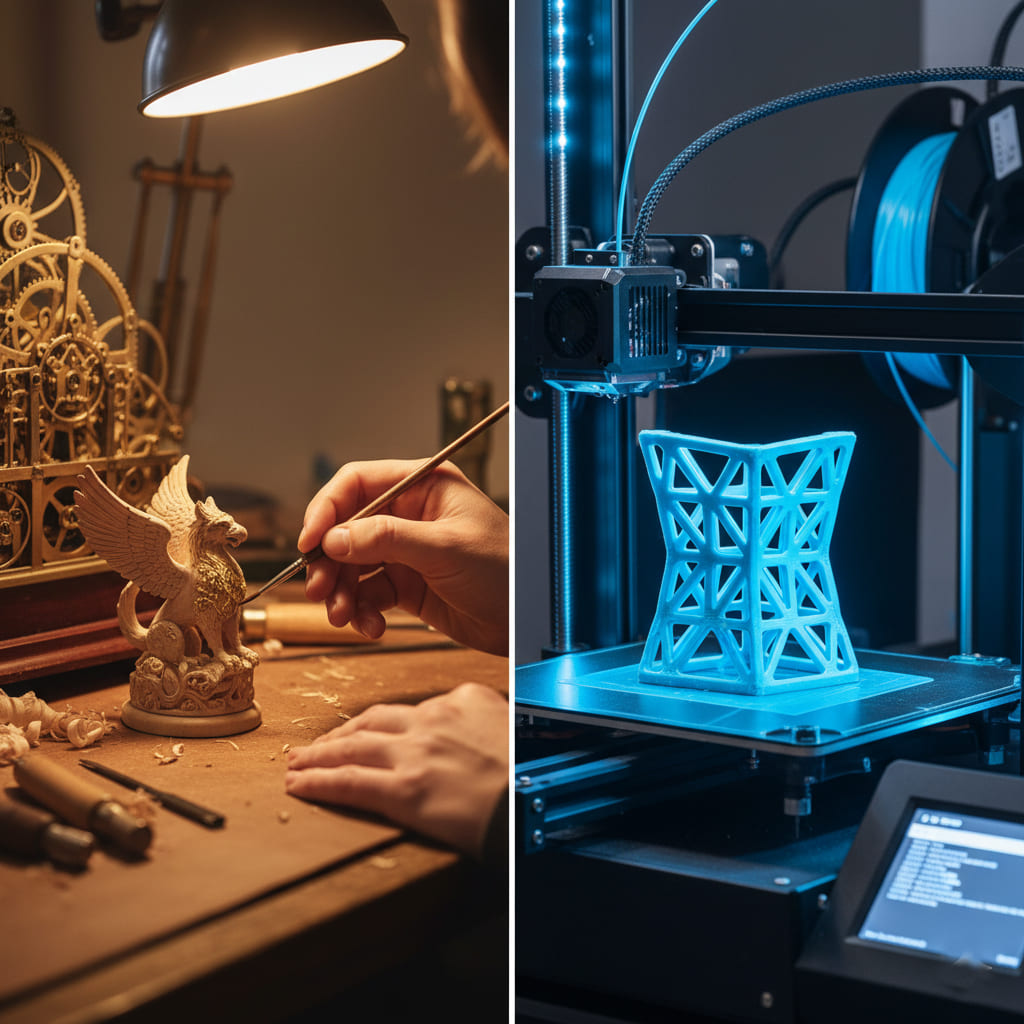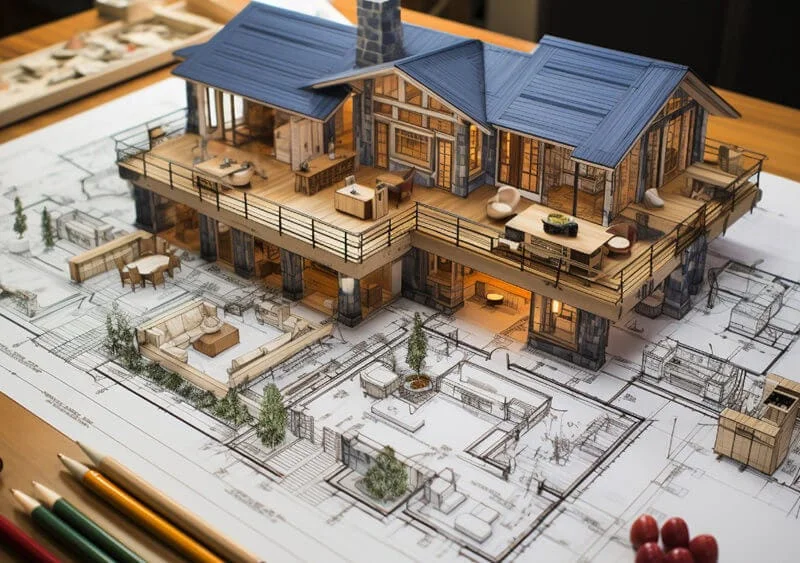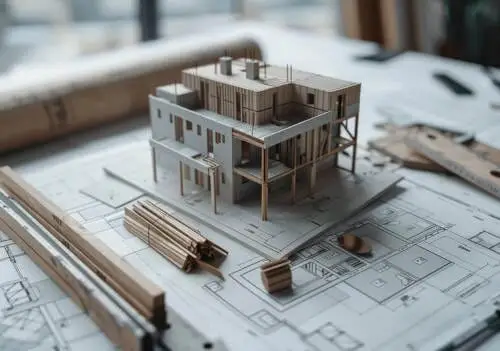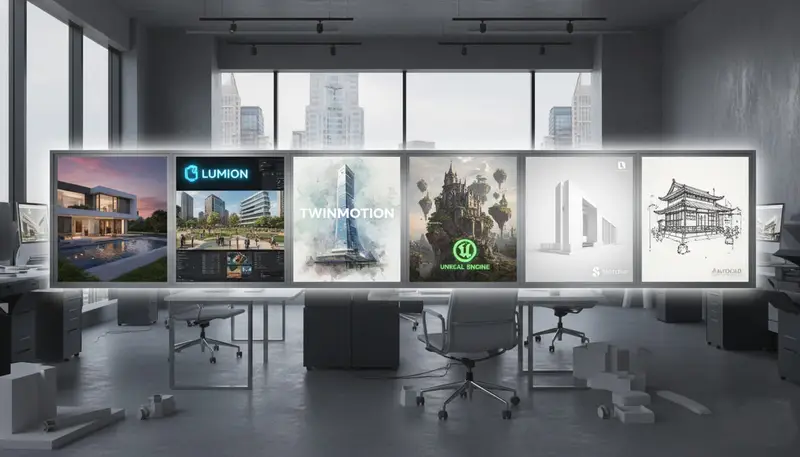Оглавление

Непреходящее наследие ремесленника: Сила традиционной ручной работы
Прежде чем мы исследуем цифровую революцию, мы должны прежде всего проявить уважение к фундаменту, на котором строятся все великие модели.: умение человеческой руки. Традиционная ручная работа – не устаревшая методика; это собрание необходимого, острые навыки, которые обеспечивают артистизм, нюанс, и душа, которую не могут воспроизвести одни лишь машины. Это решающий человеческий фактор, который превращает точную копию в неотразимое произведение искусства..
Искусство субтрактивной скульптуры: Резьба и формирование
На самом фундаментальном уровне, Традиционное моделирование – это скульптурное искусство.. Это процесс работы мастера с использованием ручных инструментов — напильников., долота, наждачная бумага разной зернистости — для придания цельному куску дерева или пенопласта органической или сложной формы.. Это медленный, методический процесс, основанный на многолетнем развитии чувства и интуитивного понимания материала.
- Сильные стороны: Этот подход не имеет себе равных для создания уникальных, неповторяющиеся формы, тонкие изгибы, и достижения действительно индивидуального “чувствовать.” Он отлично подходит для ранней стадии концептуальные модели где художественное выражение и исследование формы имеют первостепенное значение.
- Ограничения: Процесс по своей сути медленный и трудоемкий. Также сложно идеально воспроизвести форму., что делает его менее подходящим для создания сотен одинаковых компонентов, таких как стойки окон для небоскреба..
Душа поверхности: Мастерская покраска и отделка
Это, пожалуй, самая важная область, где прикосновение мастера остается незаменимым.. Машина может нанести слой краски, но он не может воспроизвести тонкое мастерство мастера-финишиста.. Это гораздо больше, чем просто цвет; речь идет о создании правдоподобия.
Что делает мастер-художник:
- Тщательная подготовка: Процесс начинается с тщательной подготовки поверхности., включая тонкую шлифовку, нанесение нескольких слоев грунтовки, и влажная шлифовка между слоями для создания безупречного холста..
- Тонкое везеринг и текстурирование: Использование сложной техники аэрографа и кисти с тонкой щетиной., ремесленник может создать тонкие недостатки, которые делают модель правдоподобной.. Это может быть нежное изменение цвета кирпичного фасада., небольшое старение на каменной стене, или мягкая текстура литого бетона.
- Безупречная отделка: Эксперт может добиться идеального, глянцевое покрытие автомобильного класса или полностью однородное, неотражающее матовое покрытие — уровень качества, сразу бросающийся в глаза взыскательному глазу.
Человеческий глаз по-прежнему остается лучшим инструментом для оценки цвета., текстура, и реализм. Мастер может создать такой уровень нюансов в отделке, который просто не под силу машине.. Для полного изучения того, как разные материалы воспринимают эту отделку., Смотрите наш Полное руководство по модельным материалам.
Заключительный акт: Точная сборка и детализация
Финал, ответственный этап изготовления модели – сборка, где сотни или тысячи отдельных компонентов объединены в единое целое.. Это головоломка с высокими ставками, требующая огромного терпения., твердая рука, и острый взгляд на выравнивание.
“Машина может разрезать тысячу идеальных кусочков, но нужен художник, чтобы соединить их душой.”
Мастерство мастера-сборщика заключается в обеспечении идеального, микроскопическое выравнивание, создание чистых, невидимые швы, и деликатно размещаем финальные элементы антуража (крошечные деревья, машины, и люди) которые оживляют сцену. Они могут сделать хорошо, Регулировка на ходу для обеспечения идеальной посадки, навык реагирования, который невозможно запрограммировать. Это то, чем дышит финал “жизнь” в модель.

Цифровая революция: Сила современного ремесла
Современное ремесло — это процесс перевода идеального цифрового файла в идеальный физический объект с безошибочной точностью., повторяемая точность. Этот технологический скачок, основано на компьютерном проектировании (Атмосфера) и цифровое производство, устранил многие физические ограничения человеческой руки. Это открыло новые границы сложности., скорость, и точность изготовления моделей, позволяя архитекторам’ самые амбициозные замыслы, которые предстоит реализовать.
3D Печать (Аддитивное производство): Создаем невозможное
Самой революционной технологией в современном моделировании, несомненно, является 3D-печать.. Фундаментальная концепция заключается в “аддитивное производство”— построение объекта слой за микроскопическим слоем из ничего.. Это позволяет создавать формы, которые невозможно вырезать или собрать традиционными методами..
| Ключевые технологии 3D-печати в архитектуре | |||
|---|---|---|---|
| Технология | Как это работает | Лучше всего для | Ключевая сила |
| Стереолитмикромография (СЛА) | УФ-лазер слой за слоем отверждает жидкую фотополимерную смолу.. | Замысловатые фасады, декоративные экраны, презентационные детали с гладкой поверхностью. | Исключительная детализация & Гладкость. Производит детали с качеством, аналогичным литью под давлением.. |
| Моделирование сплавленного осаждения (FDM) | Нагретое сопло выдавливает термопластическую нить. (как PLA или ABS) слой по слою. | Модели массирования на ранней стадии, внутренние структурные компоненты, больше, менее детализированные детали. | Скорость & Бюджетный. Рабочая лошадка для быстрого прототипирования и мощной, функциональные части. |
| Селективное лазерное спекание (SLS) | Мощный лазер слой за слоем сплавляет порошкообразный нейлон или другие полимеры.. | Сложная геометрия, взаимосвязанные части, долговечные функциональные прототипы. | Свобода дизайна. Не требует никаких опорных конструкций, позволяющая создавать очень сложные формы. |
Влияние этой технологии настолько глубоко, что мы создали полное глубокое погружение в эту тему.. Чтобы узнать больше, читать Революция 3D-печати в архитектуре.
Лазерная резка (2D субтрактивный): Король чистых краев
Лазерная резка – еще один краеугольный камень современной мастерской.. Процесс включает в себя мощную, лазерный луч с компьютерным управлением, который точно вырезает 2D-фигуры из листовых материалов, таких как акрил, древесина, и картон. Он делает это с невероятной скоростью и точностью., оставив чистый, часто полированный край, который практически не требует ручной обработки.
- Сильные стороны: Он не имеет себе равных по скорости и точности при создании плоских компонентов.. Сюда входят идеально точные плиты пола., Следы зданий, макеты планов участка, и повторяющиеся фасадные панели. Лазерный резак гарантирует, что каждый из тысячи оконных проемов модели небоскреба будет совершенно идентичен..
- Ограничения: Как 2D-процесс, он может только резать профили и не может самостоятельно создавать трехмерные формы. Волшебство происходит, когда эти идеально вырезанные 2D-куски собираются в 3D-объект..
Сторонний фрезерование (3D субтрактивный): Мастер массы и топографии
Сжигание (Компьютерное числовое управление) фрезерование – это высокотехнологичная эволюция резьбы. Это субтрактивный процесс, при котором режущий инструмент, управляемый компьютером, (как высокоскоростное сверло) вырезает трехмерную форму из твердого куска материала, например, пенопласт высокой плотности, древесина, или даже алюминий.
- Сильные стороны: Это абсолютно лучший метод для создания больших, надежные основы топографических моделей с идеальной точностью контуров, основанные на данных цифровых съемок. Он также отлично подходит для быстрого изготовления простых, модели твердых массивов зданий для исследований городского планирования или испытаний в аэродинамической трубе.
- Ограничения: Он менее эффективен, чем 3D-печать, для создания полых или очень сложных деталей с внутренними деталями..
Синергия в действии: Как “против.” становится “И”
Это ядро современного, философия создания моделей высокого класса. Модель мирового уровня – это не демонстрация преимуществ одной техники над другой.; это плавная и интеллектуальная интеграция обоих. Настоящий опыт заключается в знании того, какой инструмент — рука или машина — подходит для каждой конкретной задачи в рабочем процессе.. Речь идет об использовании сильных сторон каждого метода для создания конечного продукта, который превосходит то, чего можно было бы достичь любым методом в отдельности..

Анатомия компонента мирового класса: Высокодетализированный фасад
Давайте воспользуемся практическим примером, чтобы рассмотреть этот гибридный процесс.. Представьте себе создание единого, сложная фасадная панель для элитной башни:
- Цифровой фонд: Процесс начинается с идеального файла САПР архитектора.. Это неизменный источник истины, гарантирующий точность размеров..
- Структурная задняя панель (Лазерный Резак): Цельная задняя часть фасада, что обеспечивает жесткость, точно вырезана лазером из листа акрила. Это гарантирует, что он будет идеально ровным и все точки крепления будут находиться в правильном месте..
- Сложный экран (3Д-принтер): Комплекс, параметрический декоративный экран, расположенный перед конструкцией, затем изготавливается с использованием 3D-принтера SLA с высоким разрешением.. Это отражает сложную, органичная деталь, которую невозможно сделать вручную.
- Безупречная отделка (Ручная работа): Необработанная 3D-печатная деталь, в то время как точный, могут иметь микроскопические линии слоев. Теперь он передан мастеру-ремесленнику, который тщательно шлифует его до стеклянной гладкости.. Затем он попадает к художнику, который наносит многослойную картину., лакокрасочное покрытие автомобильного класса в специальной покрасочной камере.
- Финальная сборка (Ручная работа): Опытный сборщик, с помощью микроскопа и специализированных приспособлений, бережно соединяет идеально окрашенный экран с идеально вырезанной задней панелью с микроскопической точностью, обеспечение чистоты, невидимый шов.
В этом примере, машина обеспечивала скорость и точность; рука обеспечила душу и безупречную отделку. Эта синергия особенно важна в крупных, сложные проекты, подобные тем, которые мы изучаем в Искусство модели генерального плана.
| Гибридный рабочий процесс: Технологии И Ручная работа | |||
|---|---|---|---|
| Задача | Роль технологий (Точность & Скорость) | Роль ручной работы (Нюанс & Артистизм) | Превосходный результат |
| Создание топографической основы | 5-осевой фрезерный станок с ЧПУ вырезает контуры из пенопласта высокой плотности с идеальной точностью на основе цифровых данных.. | Ремесленник накладывает тонкие текстуры, цвета, и начальные слои ландшафтного дизайна вручную. | Идеально точная и красиво реалистичная основа ландшафта.. |
| Изготовление сложного фасада | 3D-принтер SLA создает сложные, геометрически сложный внешний экран. | Мастер-художник применяет многоэтапный, нюансы окраски необработанной детали. | Фасад, который одновременно геометрически совершенен и эстетически убедителен.. |
| Производство 1,000 Оконные рамы | Лазерный резак вырезает каждую рамку из листа акрила с идеальной точностью., повторяемая точность за долю времени. | Мастер тщательно устанавливает каждую раму., обеспечение идеального выравнивания и чистой посадки. | Идеально ровный и чистый внешний вид здания, завершено в значительно более короткие сроки. |
| Создание реалистичного ландшафтного дизайна | Лазерные резаки смогут производить арматуру для деревьев; 3D-принтеры могут создавать уникальную уличную мебель. | Художник вручную создает листву для каждого дерева., применяет разнообразный почвенный покров, и устанавливает сцену. Мы исследуем это в Секреты реалистичного ландшафтного дизайна. | Яркий, правдоподобный миниатюрный мир. |
Влияние на конечный продукт: Что это слияние означает для вас
Понимание этого гибридного процесса интересно, но что это на самом деле означает для вас как клиента? Преимущества не только философские; это ощутимые улучшения, которые напрямую влияют на успех вашего проекта..
Беспрецедентное качество и детализация
Слияние технологий позволяет получить конечный продукт, который действительно является лучшим из обоих миров.. Вы получаете ошеломляющую геометрическую сложность и идеальную точность размеров, которую невозможно было вообразить с помощью чисто ручных методов.. В то же время, ты получишь душевное, нюансированный, и гиперреалистичная отделка, которой нет у чисто машинных объектов.. В этом разница между просто точной моделью и действительно захватывающей.. Возможность достичь этого является ключевой причиной, по которой многие фирмы обращаются к глобальным производственным центрам., стратегия, которую мы подробно описываем Преимущество Китая.
Ускоренные сроки и повышенная надежность
Скорость – главное преимущество. Автоматизируя наиболее повторяющиеся и трудоемкие задачи (как резать 1,000 одинаковые оконные рамы), сроки производства существенно сжаты. Такая эффективность позволяет мастерам-ремесленникам сосредоточить свое драгоценное время на высокоэффективных задачах, требующих их уникальных навыков., например, живопись, отделка, и финальная сборка. Этот параллельный рабочий процесс означает, что ваш проект будет завершен быстрее и с большей предсказуемостью..
Расширенное ценностное предложение
Такая операционная эффективность напрямую приводит к повышению эффективности ваших инвестиций.. Ведущая фирма, освоившая этот гибридный подход, может предоставить модель с более высоким уровнем детализации., большая сложность, и более сложные функции (как интегрированный системы освещения) для бюджета, который может покрыть только более простой, менее впечатляющая модель от конкурента, который полагается на более старую модель, менее эффективные методы. Это основная часть современной структуры ценообразования., которые мы объясним в Распаковывать 5 Ключевые факторы ценообразования архитектурной модели.

Руководство покупателя: Как определить настоящую гибридную мастерскую
Теперь, когда вы понимаете идеальный процесс, вы имеете право эффективно проверять потенциальных партнеров. Так, как вы можете определить, действительно ли фирма освоила эту синергию или она просто отдает должное технологиям?? Вот что искать.
Анализ портфеля экспертным взглядом
Ищите портфолио, которое демонстрирует баланс сильных сторон. Вы должны увидеть проекты невероятной геометрической сложности и замысловатых деталей. (признак передового цифрового производства). Но вы также должны увидеть свидетельства прекрасного, нюансы отделки, реалистичный ландшафтный дизайн, и безупречная сборка (признак искусных ремесленников). Будьте осторожны с портфелем, который демонстрирует только одну сильную сторону, например, геометрически интересные, но плохо прокрашенные модели, или простые модели, которые хорошо прорисованы, но не имеют сложности..
Ключевые вопросы, которые следует задать потенциальному партнеру
Когда вы проводите собеседование с потенциальными создателями моделей, задавая правильные вопросы, можно раскрыть свою истинную философию и способности.. Вот несколько для начала:
- “Можете ли вы рассказать мне о конкретном процессе, который вы бы использовали для создания этого сложного фасада по моему проекту?? Какие детали будут изготавливаться на станке, а какие — вручную??”
- “Какой процент вашего производственного процесса, в частности 3D-печати и лазерной резки, выполняется собственными силами, а не внешним подрядчиком??”
- “Можешь показать мне крупным планом?, неретушированные фотографии лакокрасочного покрытия ваших последних моделей?”
Полный список вопросов, которые помогут вам выбрать подходящего партнера, наш гид 10 Критические вопросы, которые нужно задать, прежде чем нанимать модельного производителя является важным ресурсом для любого разработчика или архитектора.
| Контрольный список проверки для гибридной мастерской | ||
|---|---|---|
| Область для оценки | Зеленый флаг (Указывает на настоящую синергию) | Красный Флаг (Указывает на дисбаланс процесса) |
| Портфель | Демонстрирует баланс высокотехнологичной сложности и интерактивности., художественная отделка. | Модели либо геометрически просты, либо плохо показывают себя., необработанная поверхность. |
| Технология | Они с гордостью перечисляют свое собственное оборудование и могут рассказать о сильных сторонах каждого из них.. | Они не имеют четкого представления о своих технологиях или признаются, что передают большую часть производства на аутсорсинг.. |
| Командные навыки | Они говорят о своей команде с точки зрения специализированных ролей.: “мастера-художники,” “специалисты по электронике,” и т. д.. | Они относятся к своей команде как к общей “производители моделей.” |
| Объяснение процесса | Они могут четко объяснить, как и почему они будут использовать комбинацию методов для вашего конкретного проекта.. | Они продвигают одну технику для всего или не могут четко объяснить свой рабочий процесс.. |
Заключение: Душа в Синергии
Старая дискуссия о “Рука против. Машина” в творческих сферах закончилось. Победа не принадлежит ни одной из сторон; это принадлежит их профсоюзу. Самый ценный, красивый, и эффективные архитектурные модели в современном мире рождаются из цельного, разумное партнерство безошибочной точности цифрового производства и незаменимой души мастера.
Когда вы выбираете партнера по моделированию, вы не просто выбираете поставщика; ты выбираешь философию. Выбрав фирму, которая освоила эту синергию, вы гарантируете, что ваше архитектурное видение будет воплощено в жизнь благодаря идеальным, точность, основанная на данных, и глубокая, человекоцентричное артистизм. Вы выбираете модель, в которой есть душа..
Готовы испытать лучшее из обоих миров?
Если вы готовы увидеть, как наше уникальное сочетание передовых технологий и вневременного мастерства может воплотить ваш проект в жизнь с беспрецедентным качеством., свяжитесь с нашей командой экспертов. Мы будем рады обсудить наш гибридный процесс и предоставить бесплатную консультацию для вашего следующего проекта..







